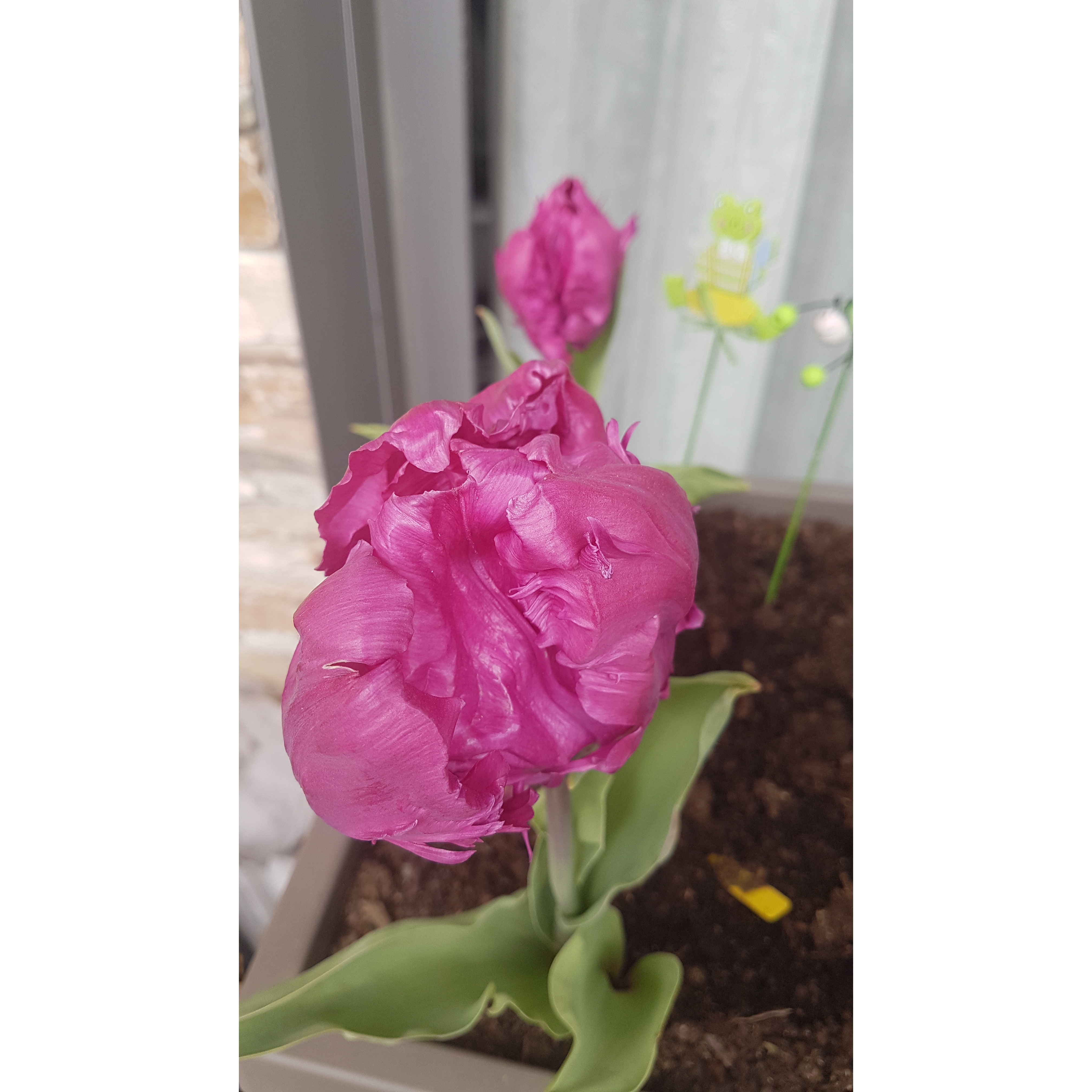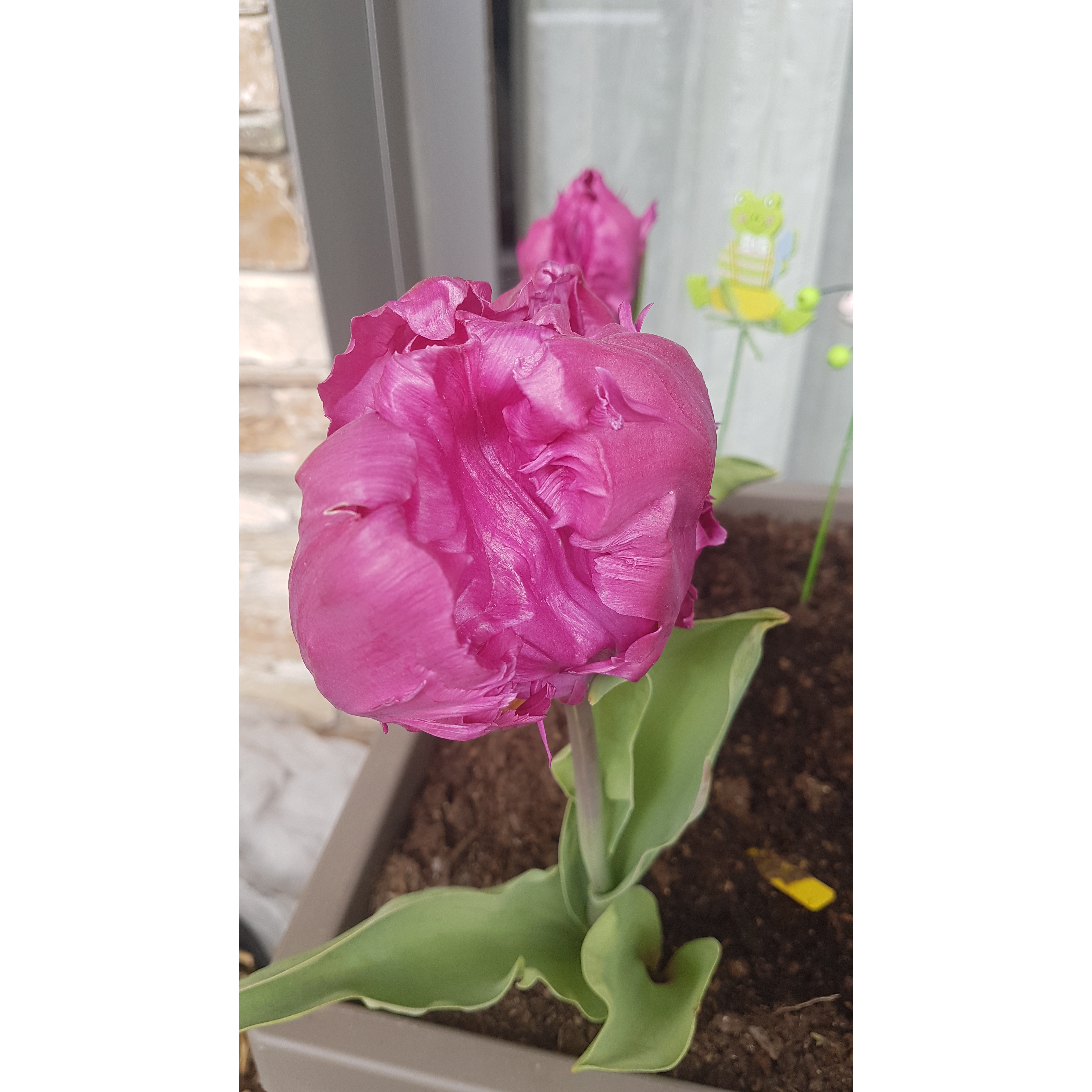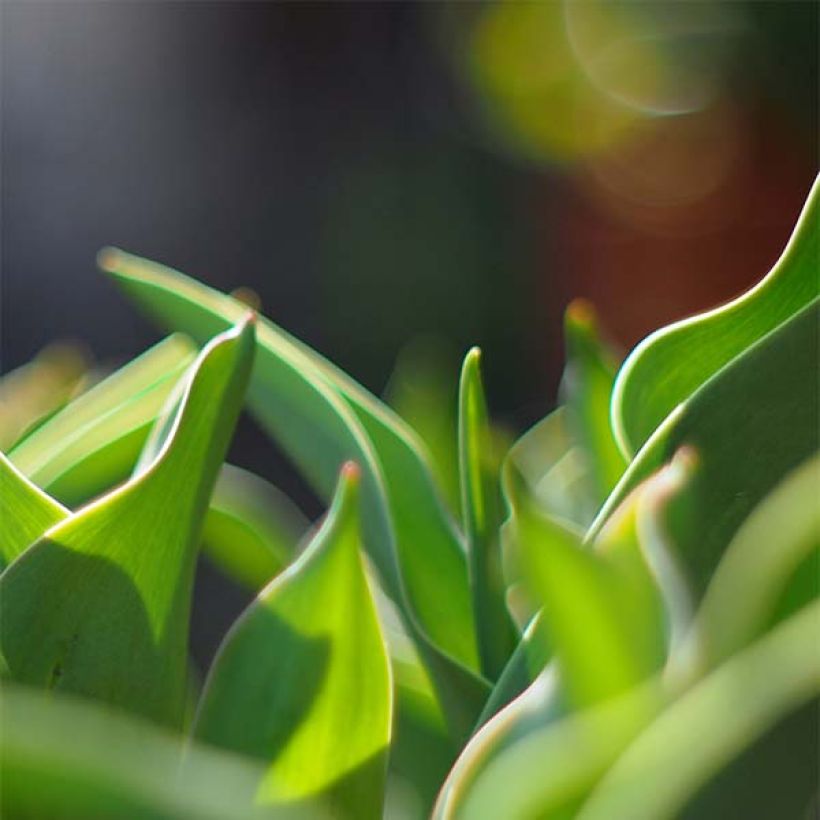

Tulipa Parrot Prince


Tulipa Parrot Prince


Tulipa Parrot Prince
View more pictures
Hide images

Ellen R.

Only two tulips have emerged from the ground, but the flowers are beautiful.
Ellen R. • 94 FR

Ellen R.

Only two out of the six bulbs have bloomed, but the flowers are beautiful!
Ellen R. • 94 FR

Annie M.

Annie M. • 69 FR
Tulipa Parrot Prince
Tulipa Perroquet Parrot Prince
Tulip 'Parrot Prince'
The parrot tulips are my favorites, these are truly beautiful and have brightened up the various flowerbeds they were in, plus their flowering lasts for several weeks.
Catherine, 04/06/2024
Special offer!
Receive a €20 voucher for any order over €90 (excluding delivery costs, credit notes, and plastic-free options)!
1- Add your favorite plants to your cart.
2- Once you have reached €90, confirm your order (you can even choose the delivery date!).
3- As soon as your order is shipped, you will receive an email containing your voucher code, valid for 3 months (90 days).
Your voucher is unique and can only be used once, for any order with a minimum value of €20, excluding delivery costs.
Can be combined with other current offers, non-divisible and non-refundable.
This plant carries a 6 months recovery warranty
More information
We guarantee the quality of our plants for a full growing cycle, and will replace at our expense any plant that fails to recover under normal climatic and planting conditions.

Would this plant suit my garden?
Set up your Plantfit profile →
Description
Tulipa 'Parrot Prince' is a beautiful parrot-flowered tulip that bears dazzling pinkish-purple flowers with frilled and twisted petals. Their shiny texture reflects light beautifully. The flowers sit perched on sturdy stems. Its late flowering in an intense colour perfectly complements that of perennials. It is also an excellent cut flower, which will look sublime in a Baroque-inspired bouquet.
Tulipa 'Parrot Prince' belongs to the Liliaceae family. Of horticultural origin, it is currently classified as a 'Parrot Tulip', whose main characteristic is to present huge flowers with twisted, puffed, ruffled, irregularly fringed petals. 'Parrot Prince' was obtained through mutation (sudden appearance of new characteristics that are maintained in subsequent generations). It is quite tall (50cm (20in)) and its flower is of a beautiful size. It stands out with its ability to reflect light, bringing to life the purple-pink colour of its petals under a unique glaze. The unique shape of the flower adds an additional charm, making this tulip anything but monotonous, especially when its buds slowly open in a vase. Flowering takes place in May and celebrates the end of the tulip season in grand style.
Parrot Group tulips are renowned for their rich colours, stunning and variegated flowers, and suitability in flower beds and bouquets. In the 18th century, they were considered monstrous. This group developed a lot in the 1930s, when it was discovered that irradiating bulbs with X-rays caused this mutation. They are unmatched for bringing the colours of spring to pots or sunny gardens. This tulip beautifully decorates balconies and patios. When designing your flower beds, you must consider the height and flowering period of the tulips, as these parameters can vary significantly from one cultivar to another. It is wise to plant extra bulbs for bouquets, as they make superb cut flowers that last a long time in a vase.
Tulip species are found in most parts of the Old World, from Western Europe to China and Japan, passing through Eastern Europe, Asia Minor, and Central Asia. Their distribution area also includes North Africa and the Indian subcontinent. The centre of diversity of the genus is located in the Pamir and Hindu Kush mountains and in the steppes of Kazakhstan.
Tulipa Parrot Prince in pictures




Plant habit
Flowering
Foliage
Botanical data
Tulipa
Perroquet
Parrot Prince
Liliaceae
Tulip 'Parrot Prince'
Cultivar or hybrid
Planting and care
Plant the bulbs in autumn, from September to December. Choose a sunny or partially shaded location. The soil should be ordinary, slightly acidic, neutral, or slightly alkaline, loose, well-worked, and well-drained. Never add poorly decomposed manure or compost to the planting soil, as it could cause the bulbs to rot. Plant the bulbs 15cm (6in) deep, spaced 10cm (4in) apart. After flowering, it is wise to remove the fruits to avoid exhausting the plant.
Planting period
Intended location
Care
Planting & care advice
-
, onOrder confirmed
Reply from on Promesse de fleurs
Haven't found what you were looking for?
Hardiness is the lowest winter temperature a plant can endure without suffering serious damage or even dying. However, hardiness is affected by location (a sheltered area, such as a patio), protection (winter cover) and soil type (hardiness is improved by well-drained soil).

Photo Sharing Terms & Conditions
In order to encourage gardeners to interact and share their experiences, Promesse de fleurs offers various media enabling content to be uploaded onto its Site - in particular via the ‘Photo sharing’ module.
The User agrees to refrain from:
- Posting any content that is illegal, prejudicial, insulting, racist, inciteful to hatred, revisionist, contrary to public decency, that infringes on privacy or on the privacy rights of third parties, in particular the publicity rights of persons and goods, intellectual property rights, or the right to privacy.
- Submitting content on behalf of a third party;
- Impersonate the identity of a third party and/or publish any personal information about a third party;
In general, the User undertakes to refrain from any unethical behaviour.
All Content (in particular text, comments, files, images, photos, videos, creative works, etc.), which may be subject to property or intellectual property rights, image or other private rights, shall remain the property of the User, subject to the limited rights granted by the terms of the licence granted by Promesse de fleurs as stated below. Users are at liberty to publish or not to publish such Content on the Site, notably via the ‘Photo Sharing’ facility, and accept that this Content shall be made public and freely accessible, notably on the Internet.
Users further acknowledge, undertake to have ,and guarantee that they hold all necessary rights and permissions to publish such material on the Site, in particular with regard to the legislation in force pertaining to any privacy, property, intellectual property, image, or contractual rights, or rights of any other nature. By publishing such Content on the Site, Users acknowledge accepting full liability as publishers of the Content within the meaning of the law, and grant Promesse de fleurs, free of charge, an inclusive, worldwide licence for the said Content for the entire duration of its publication, including all reproduction, representation, up/downloading, displaying, performing, transmission, and storage rights.
Users also grant permission for their name to be linked to the Content and accept that this link may not always be made available.
By engaging in posting material, Users consent to their Content becoming automatically accessible on the Internet, in particular on other sites and/or blogs and/or web pages of the Promesse de fleurs site, including in particular social pages and the Promesse de fleurs catalogue.
Users may secure the removal of entrusted content free of charge by issuing a simple request via our contact form.
The flowering period indicated on our website applies to countries and regions located in USDA zone 8 (France, the United Kingdom, Ireland, the Netherlands, etc.)
It will vary according to where you live:
- In zones 9 to 10 (Italy, Spain, Greece, etc.), flowering will occur about 2 to 4 weeks earlier.
- In zones 6 to 7 (Germany, Poland, Slovenia, and lower mountainous regions), flowering will be delayed by 2 to 3 weeks.
- In zone 5 (Central Europe, Scandinavia), blooming will be delayed by 3 to 5 weeks.
In temperate climates, pruning of spring-flowering shrubs (forsythia, spireas, etc.) should be done just after flowering.
Pruning of summer-flowering shrubs (Indian Lilac, Perovskia, etc.) can be done in winter or spring.
In cold regions as well as with frost-sensitive plants, avoid pruning too early when severe frosts may still occur.
The planting period indicated on our website applies to countries and regions located in USDA zone 8 (France, United Kingdom, Ireland, Netherlands).
It will vary according to where you live:
- In Mediterranean zones (Marseille, Madrid, Milan, etc.), autumn and winter are the best planting periods.
- In continental zones (Strasbourg, Munich, Vienna, etc.), delay planting by 2 to 3 weeks in spring and bring it forward by 2 to 4 weeks in autumn.
- In mountainous regions (the Alps, Pyrenees, Carpathians, etc.), it is best to plant in late spring (May-June) or late summer (August-September).
The harvesting period indicated on our website applies to countries and regions in USDA zone 8 (France, England, Ireland, the Netherlands).
In colder areas (Scandinavia, Poland, Austria...) fruit and vegetable harvests are likely to be delayed by 3-4 weeks.
In warmer areas (Italy, Spain, Greece, etc.), harvesting will probably take place earlier, depending on weather conditions.
The sowing periods indicated on our website apply to countries and regions within USDA Zone 8 (France, UK, Ireland, Netherlands).
In colder areas (Scandinavia, Poland, Austria...), delay any outdoor sowing by 3-4 weeks, or sow under glass.
In warmer climes (Italy, Spain, Greece, etc.), bring outdoor sowing forward by a few weeks.









































